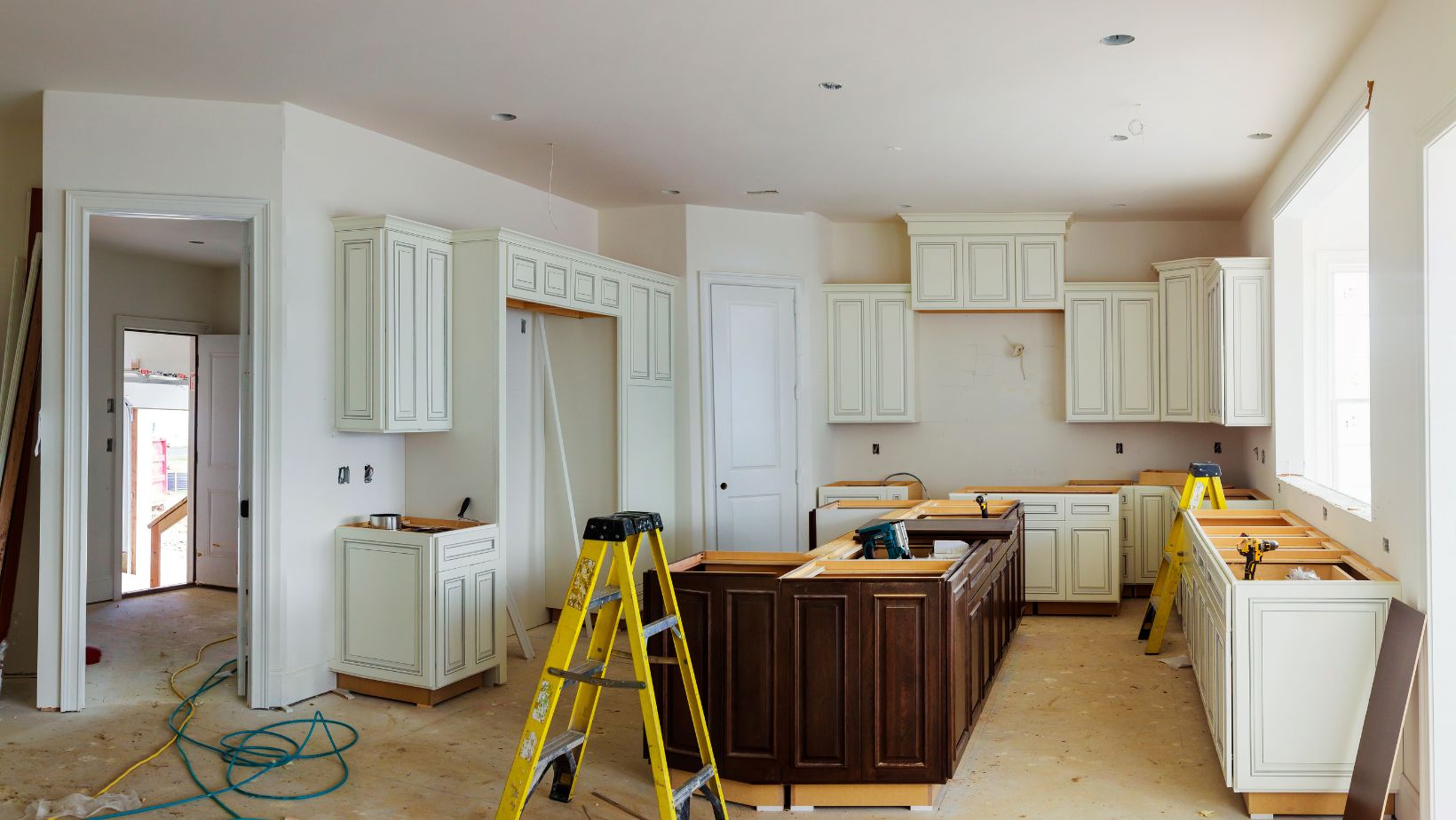Thinking about giving your home a facelift? A home remodeling loan might just be the ticket to turning that outdated kitchen into a culinary paradise or transforming your living room into the cozy retreat you’ve always dreamed of. With the right financing, those Pinterest boards can finally become a reality.
But before you dive headfirst into a sea of paint swatches and tile samples, it’s essential to understand how these loans work. They’re not just about borrowing money; they’re about investing in your happiness and increasing your home’s value. So grab your hard hat and let’s explore the ins and outs of home remodeling loans—because who doesn’t want to live in a space that makes them smile every time they walk through the door?
Table of Contents
ToggleWhat Is a Home Remodelling Loan?
Home remodelling loans provide financing options specifically designed for renovation projects. Such loans enable homeowners to borrow money for upgrades and improvements, enhancing property value and livability. Typically, these loans cover various projects, including kitchen renovations, bathroom makeovers, and additional living space.
Borrowers often choose between secured and unsecured loans. A secured loan typically requires collateral, like the home itself, which can lead to lower interest rates. Unsecured loans do not require collateral but may have higher interest rates and strict credit requirements.
Home remodelling loans can vary in terms, such as loan amounts and repayment periods. Lenders generally offer sums ranging from $5,000 to over $100,000 based on the borrower’s credit profile and the estimated cost of the renovation. Repayment terms usually span from 5 to 30 years, depending on the loan type.
Interest rates for home remodelling loans frequently fall between 3% and 8%, influenced by factors like credit score and loan type. Many homeowners consider using these loans to finance projects that create immediate impacts, such as updating an outdated kitchen with new appliances and fixtures.
It’s crucial for potential borrowers to assess overall project costs and understand the specifics of the loan products available. Properly budgeting for the renovation ensures that homeowners can comfortably manage monthly payments while improving their living space. Understanding loan options empowers owners to make informed decisions, leading to successful home transformations.
Types of Home Remodelling Loans
Homeowners exploring options for remodelling projects can choose from several types of loans. Each loan type serves different financial needs and borrowing capacities.
Home Equity Loans
Home equity loans allow borrowers to access funds based on the equity in their homes. These loans typically feature lower interest rates due to being secured against the property. Borrowers can receive amounts ranging from $15,000 to $100,000, with repayment terms often spanning 5 to 30 years. Since these loans tap into existing home value, they represent a popular option for significant renovations.
Personal Loans
Personal loans provide a flexible financing option for home remodelling. They are typically unsecured, meaning no collateral is required, which can make approval quicker. Notably, borrowers can access loan amounts between $1,000 to $50,000 with repayment terms generally lasting 3 to 7 years. Interest rates for personal loans can be higher compared to secured loans, reflecting the associated risk.
FHA 203(k) Loans
FHA 203(k) loans are ideal for homeowners seeking to finance both the purchase and rehabilitation of a property. These government-backed loans combine the cost of the home and anticipated renovation expenses into a single mortgage. Borrowers can access funds ranging from $5,000 to $35,000 for minor repairs, while major projects can exceed $100,000. An appraisal determines the total value, ensuring that borrowing amounts reflect the home’s future worth after renovations.
Benefits of Home Remodelling Loans
Home remodeling loans offer significant advantages for homeowners looking to enhance their living spaces. Access to funds specifically for renovations allows for improvements that can boost property value. With these loans, it’s possible to transform kitchens, bathrooms, and other areas quickly and effectively.
A primary benefit includes the ability to finance large projects without depleting savings. Homeowners can secure loans ranging from $5,000 to over $100,000, providing flexibility based on project scope. Repayment terms typically span from 5 to 30 years, accommodating various budgets and financial situations.
Low-interest rates often accompany secured home equity loans, making them an appealing option. These loans usually offer rates between 3% and 8%, minimizing overall repayment costs. By leveraging home equity, homeowners tap into value that already exists, directly enhancing their investment.
Personal loans serve another alternative for those without substantial equity. They offer unsecured financing amounts that range from $1,000 to $50,000, facilitating smaller projects. Although interest rates may be higher, their flexibility can work well for quick updates or minor renovations.
Utilizing FHA 203(k) loans supports buyers combining home purchase and renovations into one mortgage. This option allows borrowing against the estimated future value of the home after improvements, ranging from $5,000 to significant sums. The single mortgage streamlines payments and simplifies finances, offering an excellent path for aspiring homeowners.
Lastly, improving living spaces leads to increased comfort and satisfaction. Enhanced environments contribute positively to daily life, promoting happiness and well-being. With informed financial decisions, homeowners can enjoy both their upgraded spaces and the benefits of their investments.
Factors to Consider Before Applying
Homeowners must evaluate several factors before applying for a home remodeling loan. These factors directly impact the loan approval process and the future success of the remodeling project.
Credit Score Requirements
Credit scores play a crucial role in loan eligibility. Lenders typically require a minimum credit score, often around 620, for secured loans. Unsecured loans may have slightly higher requirements. A stronger credit score can attract better interest rates and loan amounts. Individuals with scores above 740 usually benefit from the lowest interest rates. Regularly checking credit reports can help identify any issues before applying, ensuring a smoother application process.
Loan Amounts and Terms
Understanding loan amounts and terms is vital for homeowners. Loans range from $5,000 to over $100,000, reflecting the scope of remodeling projects. Repayment terms generally vary between 5 to 30 years. Shorter terms may lead to higher monthly payments, while longer terms create lower monthly payments but increase total interest over time. Evaluating project costs helps in determining the appropriate loan amount. Secured loans often offer lower interest rates compared to personal loans. Homeowners must weigh these factors against their budgets and financial goals.
Home remodeling loans offer a valuable opportunity for homeowners to enhance their living spaces while also boosting property value. By understanding the different types of loans available and their specific terms, individuals can make informed decisions that align with their financial goals. Whether opting for a home equity loan, personal loan, or FHA 203(k) loan, each option presents unique benefits tailored to various renovation needs.
With careful planning and consideration of project costs, homeowners can transform their homes into desirable environments without compromising their financial stability. Embracing the potential of these loans can lead to a more enjoyable and satisfying living experience.







